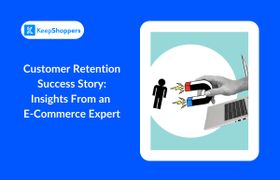Reduce Shopping Cart Abandonment Rate and Optimize Conversion Rates on Shopify
Updated April 11, 2024

AI Summary
In this article
Important Areas that your Strategy Should Consider
Make Use of Apps That Help Implement Your Strategy
Conclusion
Shopping cart abandonment is a problem that every new (and sometimes even successfully evolved) e-commerce businesses will face at some point in their journey. "Start an e-commerce store", they said, "it will be easy", they said.
There are a ton of apps and resources on the internet that will help you properly optimize your conversion rates on Shopify, however, you still need to do your research and have a good strategy in place to truly reduce the effect that cart abandonment has on your e-commerce business.
There are many reasons why potential customers abandon carts on your store, many of which you have all the control to fix, especially with a good strategy in place. First and foremost, though, you always want to ensure that you have a quality user experience, otherwise, you will start experiencing drop-off before "potential customer" is even a thing.
Important Areas that your Strategy Should Consider
1. Trust
Always make sure that your e-commerce store is fully compliant. Shoppers are still scared to perform transactions online due to their limited knowledge of how these transactions actually work, and also bad experiences they've heard about through the grapevine.
Make use of all the relevant badges available through compliancy and payment providers you make use of and ensure that they are fully visible to the customer. Also, make sure that you have very detailed Privacy Policies and Terms of Service in place. Visibility and transparency go a long way into building trust in your store.
2. Hidden Costs
Nothing irritates a potential customer more than spending their valuable time going through the shopping process on your store only to find out, once getting to the checkout page, about all or any additional fees being added.
Again, visibility and transparency around all additional fees upfront will encourage shoppers to continue their journey through to actually purchasing on your store. If a shopper only sees these fees at the end of the journey this will also add to any trust issues they might have had to start with.
3. Window Shopping
A lot of shoppers are merely browsing through the internet looking at things they're interested in buying. They're either looking for the best price or they just can't afford to buy the products they want at this time. Either way, they're still a potential customer of yours because they are looking at a specific product that they like.
You should also always be aware of your competitors' pricing for the same or similar products and ensure that you can match them, beat them or offer a more valuable service to your potential customers, otherwise, they will abandon their carts.
Entice shoppers with first-order coupons or bonuses such as free shipping to persuade them not to abandon their cart.
4. Complicated or lengthy checkout process
Last, but not least, one of the biggest drop-off areas for a lot of new, and already-established, e-commerce stores is a lengthy or complicated checkout process. We live in an age of instant gratification, customers want to be able to find the product they want and finish the checkout process as quickly as possible. Optimizing the checkout process is probably the most important task that you should focus on when devising your abandon cart strategy.
There's no quick fix or one size fits all solution here. You need to decide on the most suitable flow for your store's use case. Certain flows will allow a shopper to find their desired product as quickly as possible and checkout and pay similarly. While this is beneficial in some cases, it might also create a scenario where you miss out on any up-sell and cross-sell opportunities which obviously increase basket sizes and obviously make you more money.
A good way to find the right match for your business is to have multiple checkout processes, otherwise known as A/B testing. This will allow you to test and tweak each process until you find the most efficient one.
Make Use of Apps That Help Implement Your Strategy
Once you have come up with a sound strategy that you think covers all of the potential problem areas, you can start making use of proven Shopify apps (plugins) that will aid your quest in increasing conversions.
These apps come with loads of configuration options, to help you retarget your potential customers and keep your business top of mind for when they are ready to pull the trigger, or even entice them to make the purchase NOW, for whatever reason you might have come up with in your strategy. Examples are bonuses, free delivery options, or discounts, as discussed above.
These apps use methods such as push notifications, instant messaging, SMS, or email to retarget a potential customer after they have dropped off from your store.
Some stores try and capture a potential customer's email address quite early on into the journey, or maybe as they are leaving your store, with a popup. Some other stores might ask the user to allow push notifications when visiting the store for the first time. This will help you to at least maintain some sort of communication with a potential client and hopefully convert them in the future.
Conclusion
Spend time doing your research and coming up with a good strategy. Research apps and always read the reviews, in order to select the apps that can help you the most. Take a look at what other stores are doing, ones that are similar to yours and even ones that aren't, but that you feel have managed to convert you into a customer. Ask yourself what they did to convert you and why you think it worked.
Lastly, this should be an ongoing process. Use the data you collect to continuously optimize and test the process until you find the most optimal process for your business.





